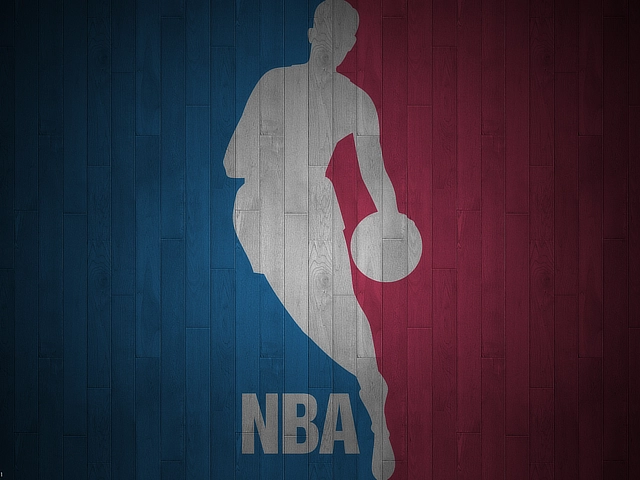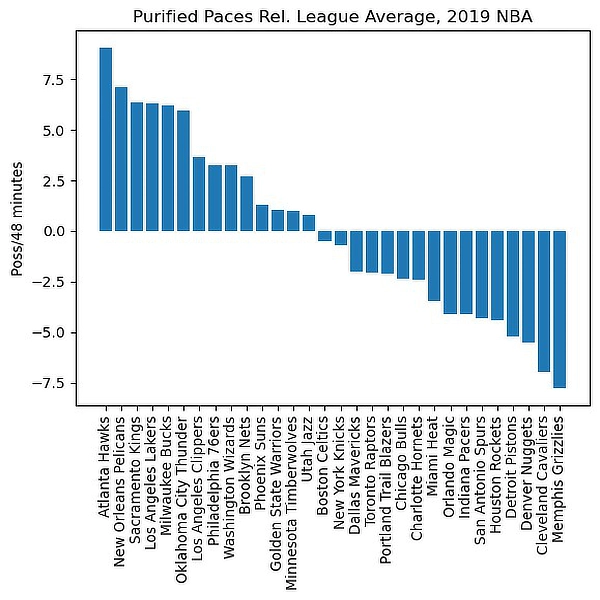
We’ve heard it a million times, “If this team can control the pace, they’re going to win this game!”.
Sometimes this comes up when young, athletic teams play older and slower teams with the idea that the older players will tire quickly. On the other hand, sometimes it’s said about defensive teams trying to slow down the scoring runs of their offensively-minded opponent.
Announcers, talking heads, and fans seem to agree that dictating pace helps win games. But does the data support this claim?
Let us take a look at the 2019 season to see whether this oft cited wisdom actually stands up. Is controlling the pace good for a team’s winning chances? Or is it just a crutch for analysts to talk about?
This article is inspired by work done on the sports analytics blog, The Data Jocks which is meant to both develop brand new statistics and models for sports analytics while also teaching math through sports.
A Bit About Pace in the NBA
Pace is measured by counting the number of possessions that happen in a typical 48 minute game. More possessions means a faster pace. Pace has a significant impact on the game in two ways:
- Faster pace means more possessions, more trips up and down the court, and ultimately more running. This is the wisdom behind why faster paces are thought of as favoring younger, more athletic teams.
- High-powered offenses often benefit from faster paces because scoring a lot of points in a short period of time has a psychological effect on the other team.
Pace is usually measured in possessions per 48 minutes. Counting possessions can be difficult, but roughly you add up the number of shot attempts, trips to the free throw line, and turnovers and subtract offensive rebounds.
However, doing this from the box score will give you the average of two teams’ paces. If one team plays fast and the other plays slow, the game’s pace will be somewhere in between the two teams’ true paces.
Looking at long term trends over the course of the season can lead to better estimates of how fast a team plays. By assuming that each game’s pace is the average of the composite team’s paces, figuring out how fast someone plays is just a linear algebra / parameter estimation problem.
This new pace measurement is called purified pace. The purified pace relative to league average for each team in 2019 is shown below:

The Methodology
The question is whether controlling the pace leads to teams playing better. How can this be studied? Maybe it is easiest with specific examples.
In the 2019 season, the fastest team was the Atlanta Hawks who played at a pace around 103 possessions per 48 minutes. This means that they tend to play faster than their opponents. If dictating the pace matters, then the Hawks should do better in faster games.
First, by determining which teams dictated the pace, it is possible to compute the winning percentage of such teams. If pace doesn’t matter, then this number should be around 50%. However, if dictating the pace does matter then this number should be over 50% - maybe 55% or 60%.
Then, to make sure the effects are as expected on a team-by-by basis, the slowest and fastest teams will be studied closer. By plotting “margin of victory” against “pace” for each of their games in the 2019 season, the trends should become clear.
Let’s see what the data says.
How Often Does the Team Dictating the Pace Win?
For each game in the 2019 NBA season, the game’s pace was computed from the box score stats. This number was compared to each team’s season-long pace.
Whoever’s average pace was closer to the game’s pace was said to “dictate” the pace of the game. Then, the winning percentage of the teams that dictated the pace was computed.
The results were fairly shocking.
In the 2019 season, the team that dictate the pace won just 48.8% of the time. That means the team that dictated the pace actually won less often than their opponents in the 2019 season.
However, the 1.2% difference between the dictating team’s win rate in 2019 and the 50% we would expect if pace didn’t matter is not statistically significant. The z-score of this sample under the 50% win rate null is about -0.9.
So it isn’t like dictating the pace actually loses you the game. It simply probably doesn’t help you win the game.
Pace and Margin of Victory for the Slowest and Fastest Teams
Maybe taking the average league-wide hid the effect of pace. To make sure these counter-intuitive conclusions stood up, it is important to look directly at the slowest and fastest teams in the league to identify trends.
For a few of the fastest and slowest teams, a scatter was created showing margin of victory and game pace for every game they played in 2019. If pace matters, there should be clear trends in this data.
If pace matters, the teams that like to play slow should win by more in slow games and teams that like to play fast should win by more in fast games. But this is not what was found.
First, let’s look at both the Atlanta Hawks and Sacramento Kings - the 1st and 3rd fastest teams in 2019.


Both these plots fail to show a trend. If pace mattered, the teams’ margins of victory should have increased as the games got faster. But this trend is not evident. Hardly any trend exists at all. This further supports that dictating the pace doesn’t matter for winning NBA games.
What about the teams that play more slowly?


The same is true for these two teams. There is nearly no trend - and certainly not a statistically significant one - in the data. This supports yet again that dictating pace doesn’t help a team win games.
Conclusions
Good analysts know to put age-old wisdom to the test. Announcers often talk about teams controlling the pace as if it was a way to assert your will. However, this hypothesis is not supported by the data.
That is, the data showed that in the NBA, dictating the pace had no impact on winning.
